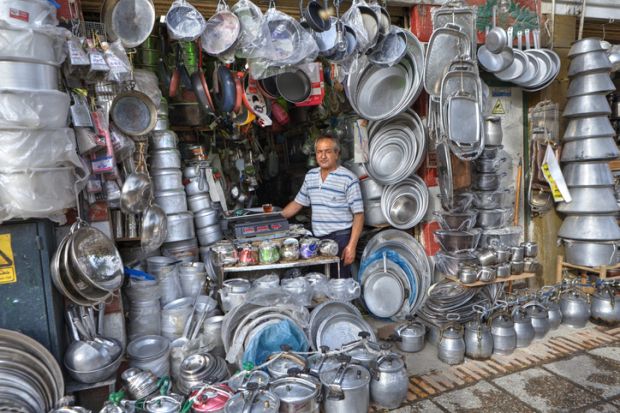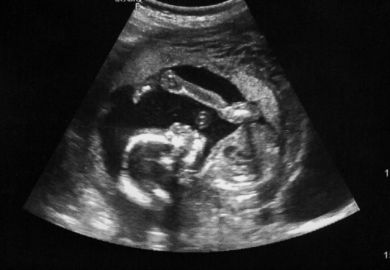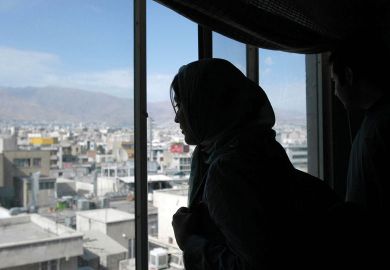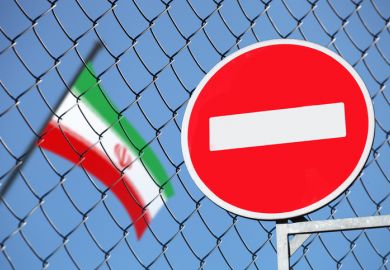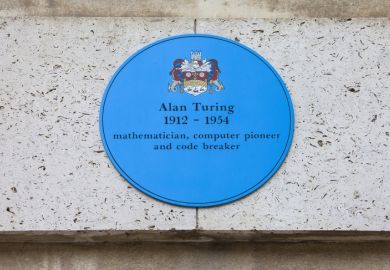Iranian science has acquired a certain renown – both internally and internationally – on account of the relatively high number of citations it attracts.
Citations are a big deal in Iran. A whole institute has been launched for monitoring the entire scientific outputs of the Islamic world, including those written in native languages. The institute periodically produces lists of the top scientists in the region and its data informs a prize for the top Muslim scientist, known as the Mustafa Prize.
There is some criticism of the artificiality of dividing up the scientific world by religion, and critics see the prize more as a religious gesture than a true appreciation of scientific work. For example, BioNTech founder and CEO Uğur Şahin, whose parents are Turkish, was recognised, but the vaccine that his firm developed later on against Covid-19 was labelled by the Iranian government as an American vaccine and was not allowed into the country.
But it isn’t only in regional citation lists that Iran purports to ride high. The research deputy of the Iranian ministry of science claims that a whole team in the ministry of science scoured the Clarivate database and found 841 researchers with Iranian affiliations among the top 1 per cent of researchers for citation. However, Clarivate itself only publishes an annual list of Highly Cited Researchers, taking them to have demonstrated “significant influence through publication” and “exceptional performance” in their fields. And only 12 researchers with Iranian affiliations are in the Clarivate list for 2022. So where the 841 figure came from is unclear, but the Iranian government appears all too willing to publicise the exaggerated number and to present those with a high number of citations as straightforwardly among the world’s top 1 per cent of scientists, celebrating them accordingly.
For instance, a meeting was recently staged between a group of highly cited researchers and Iran’s president, intended to show the authorities’ respect for expert views. But it rather backfired, prompting public debate about the true value of citation-based metrics.
It all started when one of the researchers – a highly cited one – proposed that the country’s main problems, including the high rate of inflation, could be dealt with by taking advantage of what he called the “Python global networks”. While he was explaining his allegedly ground-breaking idea, the president took notes and a video of the exchange went viral.
Python, of course, is just a programming language. It cannot be used to predict the future even though it can be used to develop AI, and there is no such thing as the “Python global networks”. People were surprised that a highly cited researcher would make such mistakes.
That said, and despite the official endorsement of citation-based metrics in Iran, questions have long been raised about their validity. People question whether highly cited researchers are really top researchers, or even fairly good ones. Some of the Iran-based highly cited researchers publish a paper every three to five days, even while holding high-level administrative positions. But doesn’t more mean less when it comes to quality?
Many people smell a rat. One suspicion is that the real work is done not by those researchers themselves but by the students and junior researchers listed as co-authors; few of the papers by these celebrated researchers are single-authored works. After all, corrupt co-authorship is thought to be very common in Iran.
Highly cited researchers are also suspected of participating in so-called citation cartels or citation rings, whereby a group of researchers dishonestly cite each other’s work. In Iran, some even speak of publication and citation mafias, whose members not only trade citations but can even manipulate journals’ refereeing processes.
Thus, international publication is losing the prestige it once had in Iran. People even make jokes about it. How is it possible, some ask, that some Iranian researchers have a higher h-index than Albert Einstein? They fear that, rather than reflecting merit, such metrics drive misbehaviour, particularly in a culture that lacks academic freedom.
The reputation of higher education has been damaged in Iran over recent years as a result of poor graduate outcomes, academic misconduct and its inability to push back against unscientific interventions by politicians and religious authorities. Many Iranian academics have themselves lost faith in the system, and scientometrics is worsening the damage.
Instead of superficial localisation, it would be better to develop a scientometrics applicable to the peculiar conditions of the Iranian academia. Such a metric would incentivise quality rather than cheating.
Roohola Ramezani has a PhD in philosophy from Shahid Beheshti University, Tehran. He was formerly a research fellow at the IFK International Research Centre for Cultural Studies in Vienna. Topics in social epistemology, science and education studies, and Iranian studies are among his interests.
Register to continue
Why register?
- Registration is free and only takes a moment
- Once registered, you can read 3 articles a month
- Sign up for our newsletter
Subscribe
Or subscribe for unlimited access to:
- Unlimited access to news, views, insights & reviews
- Digital editions
- Digital access to THE’s university and college rankings analysis
Already registered or a current subscriber? Login
